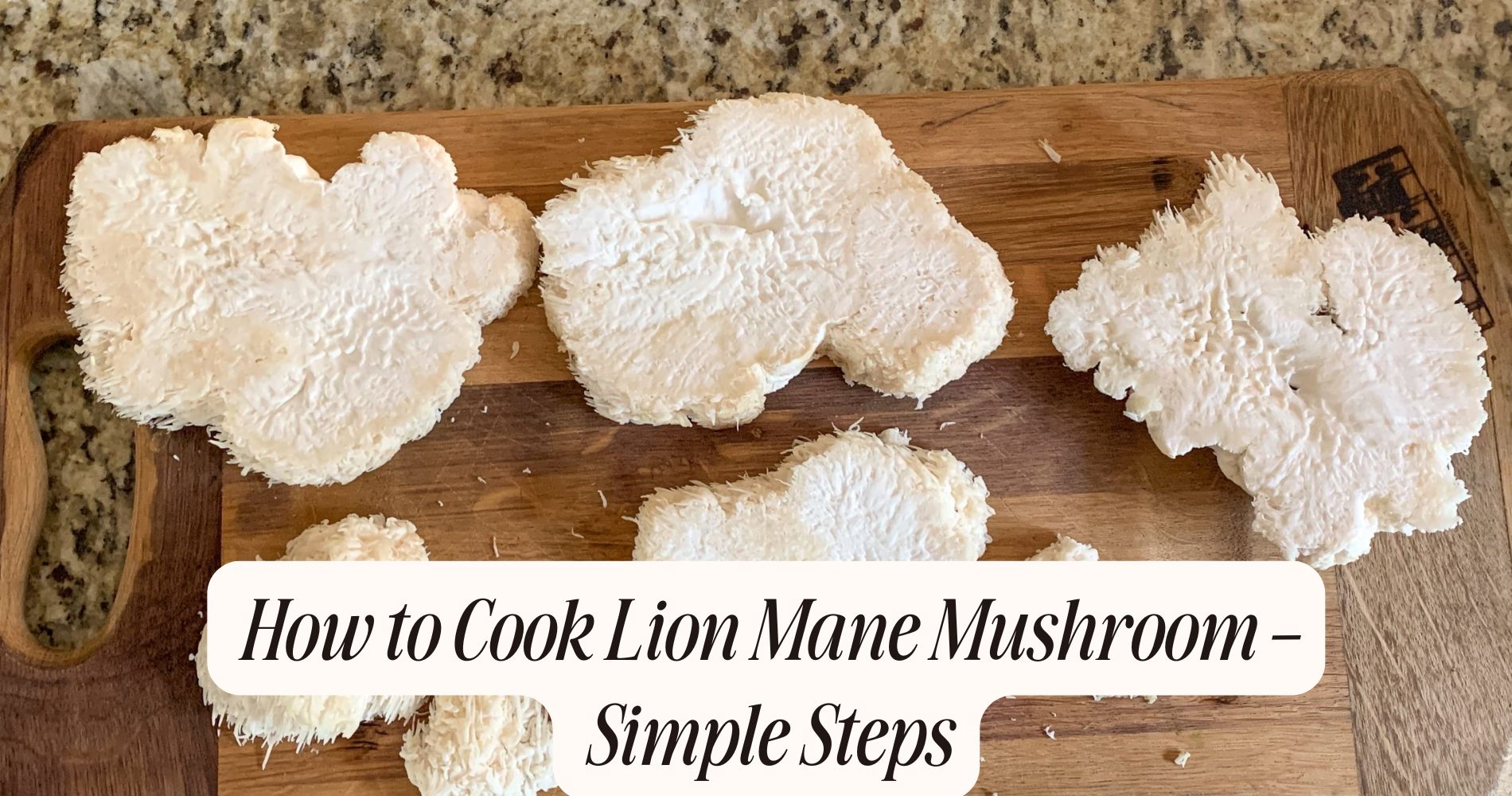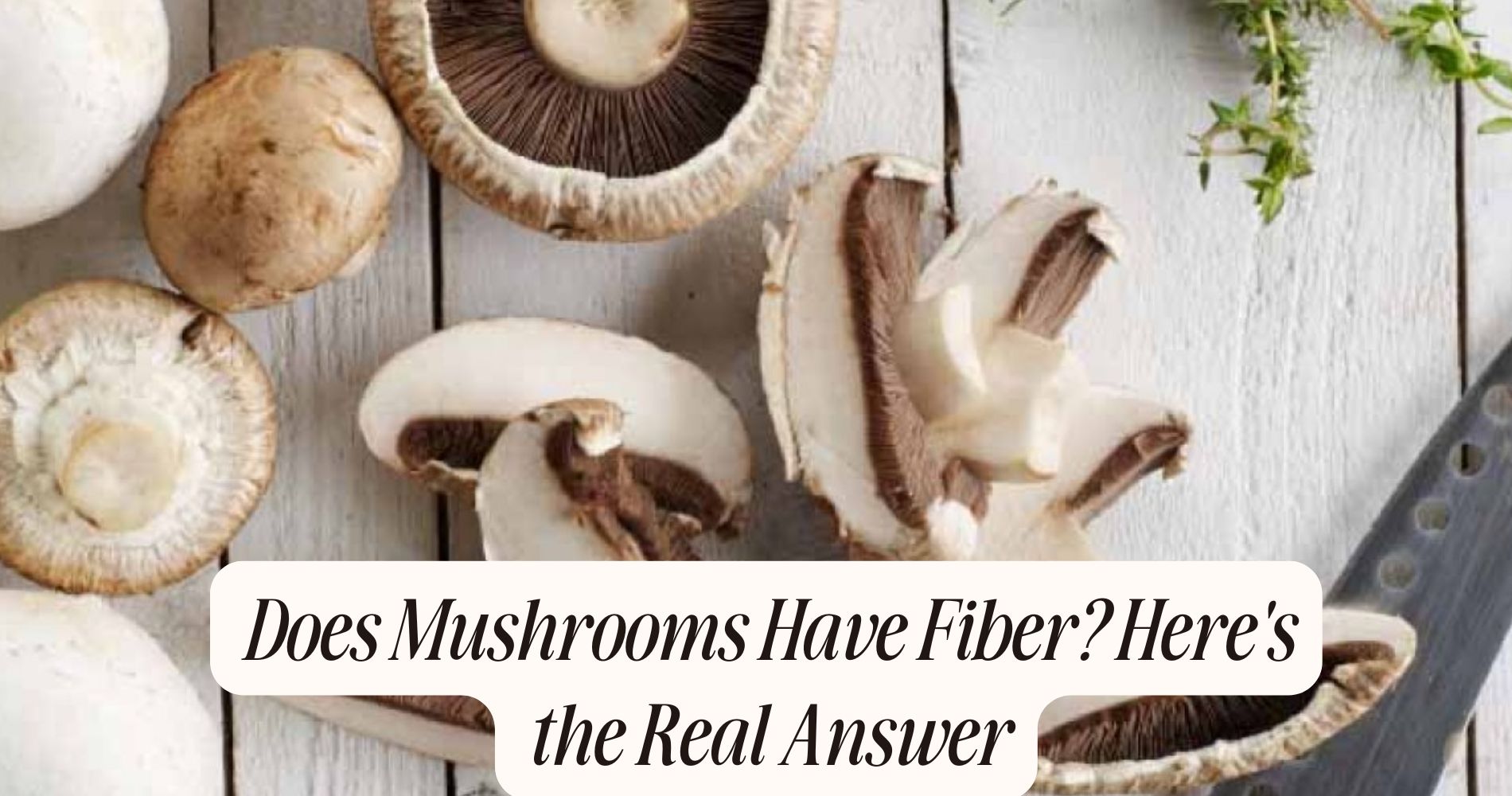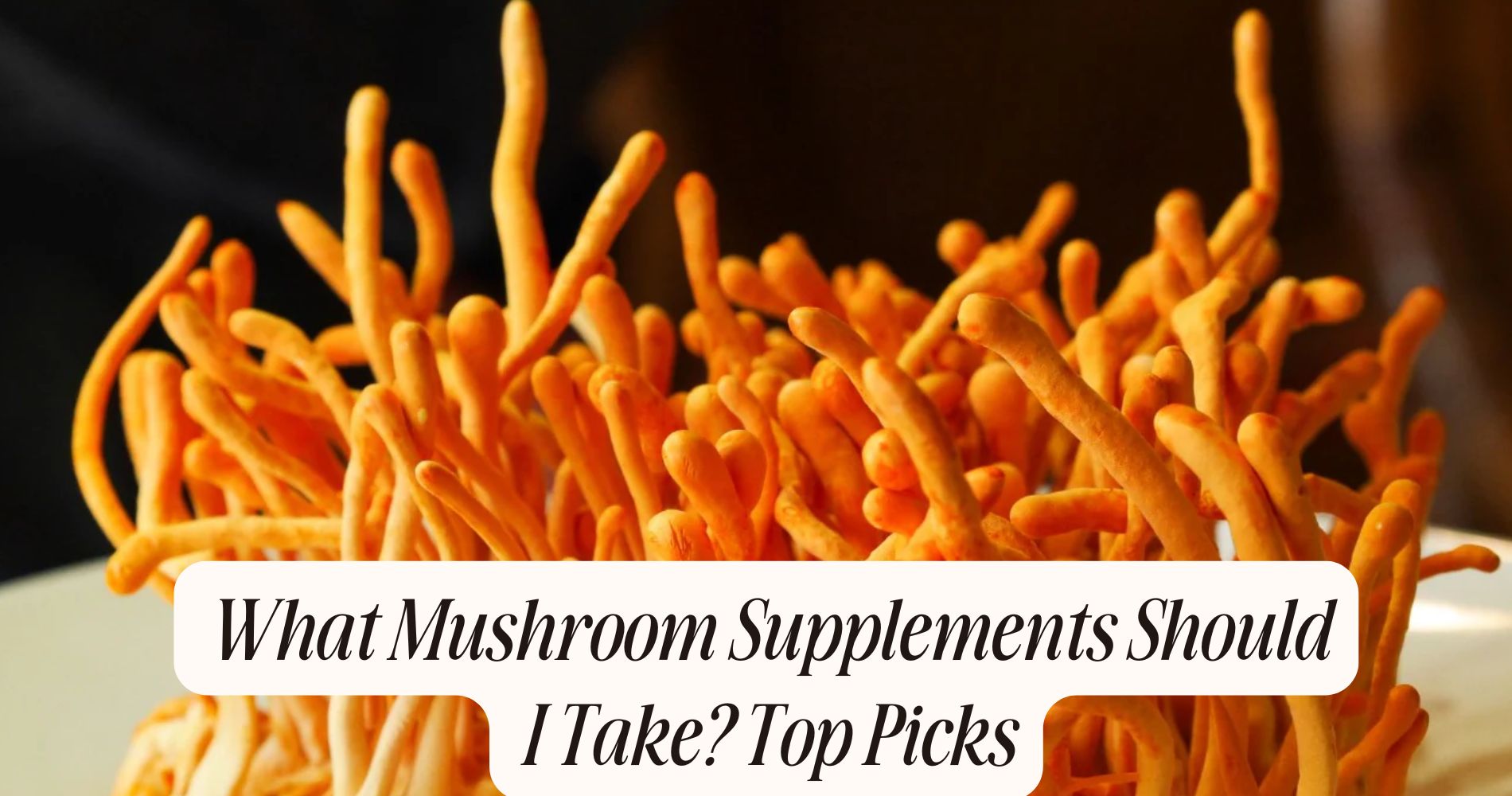
How to Cook Lion Mane Mushroom – Simple Steps
How to cook lion mane mushroom? To cook Lion’s Mane mushroom, select firm, unblemished specimens and brush off debris; trim the tough stem base. Slice into ½-inch segments, pat completely dry, and preheat a nonstick or stainless skillet with a thin layer of clarified butter or olive oil. Sear slices over high heat in a single layer, flipping once to achieve a deep golden crust. Finish with sea salt and freshly cracked pepper. Pairing techniques and advanced serving combinations await just ahead.
Choosing and Cleaning Lion’s Mane Mushrooms
Before you begin cooking, select lion’s mane mushrooms that are firm, dry, and free from dark spots or excessive moisture, as these indicate freshness and ideal texture. Examine each specimen carefully; excellent mushrooms should display dense, unblemished spines.
Lion’s mane boasts significant nutritional benefits, including high levels of beta-glucans and antioxidants, which have contributed to its celebrated role in culinary history, especially in East Asian cuisine.

To clean, avoid soaking, as mushrooms readily absorb water and compromise texture. Instead, use a soft-bristled brush or a damp paper towel to gently remove surface debris.
Trim the base with a sharp paring knife, discarding any tough or discolored portions. These steps ensure you maintain the mushroom’s integrity and maximize both flavor and health benefits.
Essential Ingredients and Tools
Once your lion’s mane mushrooms are cleaned and trimmed, gather the necessary ingredients and tools to guarantee ideal results. You’ll need a sharp chef’s knife for precise cuts and a nonstick or stainless steel skillet to ensure even browning. Use high-quality olive oil or clarified butter to optimize flavor and nutrient absorption, enhancing the nutrition benefits of lion’s mane.
Sea salt and freshly cracked black pepper provide balanced seasoning without overpowering the mushroom’s delicate profile. Silicone tongs allow gentle handling while preserving the mushroom’s unique texture.
For storage tips, keep mushrooms in a paper bag within the refrigerator to maintain freshness and minimize moisture loss. Avoid airtight containers, which encourage spoilage.
Prepare mise en place—organize ingredients and tools before cooking for seamless execution.
Slicing and Preparing for Cooking
Although lion’s mane mushrooms have a naturally fibrous structure, you should cut them into uniform, ½-inch thick slices to guarantee even cooking and ideal texture. Use a sharp chef’s knife; avoid serrated blades, as they can compress the delicate tissue.
Precisely slice perpendicular to the fibers to maintain the mushroom’s signature texture, prized throughout culinary history for its resemblance to shellfish.

Inspect each piece for debris—brush gently with a dry pastry brush rather than rinsing, as excess water can compromise mushroom preservation and lead to soggy results.
Remove and discard any woody stem bases.
For advanced preparation, pat slices dry with a lint-free kitchen towel to eliminate residual moisture, ensuring best browning and flavor absorption during the subsequent cooking stage.
Cooking Methods for Lion’s Mane Mushrooms
When you’re ready to cook lion’s mane mushrooms, select a high-heat method such as sautéing, pan-searing, or roasting to maximize both texture and flavor. Preheat your pan or oven to ensure rapid caramelization, which locks in moisture and enhances the mushroom’s meaty, lobster-like consistency—a hallmark recognized throughout culinary history.
For sautéing or pan-searing, add a thin layer of oil to a heavy skillet, then place the prepared pieces in a single layer. Avoid overcrowding to encourage browning, flipping only once to achieve a golden crust.
Roasting at 425°F on a parchment-lined sheet yields a crisp exterior while preserving the interior’s juiciness and nutritional benefits, including beta-glucans and antioxidants. Each method preserves delicate flavors without compromising nutrient density.

Serving Suggestions and Flavor Pairings
To highlight lion’s mane mushroom’s subtle seafood notes and dense texture, pair it with umami-rich ingredients like soy sauce, miso, or browned butter, as well as aromatic elements such as garlic, shallots, and fresh herbs.
For ideal flavor pairing, integrate a soy-miso glaze or brown butter emulsion to amplify the umami profile.
Sautéed lion’s mane functions well as a protein substitute in vegan “crab” cakes or as a topping for risottos and polenta.
Present slices atop toasted sourdough, layered with microgreens and a squeeze of lemon to cut through richness.
For advanced serving ideas, incorporate lion’s mane into ramen bowls or fold into savory crepes with chèvre and chives.
Always finish with flaky salt or a drizzle of quality olive oil for enhanced depth.
An Easy Alternative to Cooking: Try SUPER MUSHROOM GUMMIES
If cooking Lion’s Mane mushrooms sounds exciting but not always practical, there’s a simpler way to enjoy their benefits—meet SUPER MUSHROOM GUMMIES by Well Gummies. These tasty, wild berry-flavored chews pack the power of 10 functional mushrooms, including Lion’s Mane, into a convenient daily supplement. Whether you’re looking to sharpen focus, support immunity, or boost calm energy, these vegan gummies offer all the wellness without the prep. No chopping, no stovetop—just chew and thrive
Frequently Asked Questions
Are Lion’S Mane Mushrooms Safe to Eat Raw?
You can consider raw consumption of lion’s mane mushrooms, but safety considerations include potential gastrointestinal discomfort and reduced nutrient absorption. For ideal safety and bioavailability, it’s advisable you cook the mushroom using appropriate heat treatment before eating.
How Should I Store Leftover Cooked Lion’S Mane Mushrooms?
To store leftover cooked lion’s mane mushrooms, use airtight storage containers to prevent moisture loss and flavor transfer. Apply refrigeration tips: cool mushrooms to room temperature first, then refrigerate at 4°C or below. Consume within 3 days.
Can Lion’S Mane Mushrooms Be Frozen for Later Use?
You can freeze lion’s mane mushrooms using proper freezing techniques. First, blanch slices for two minutes, drain, and cool rapidly. Utilize airtight packaging for ideal preservation methods. This retains texture and flavor, ensuring advanced storage for later culinary applications.
Are There Any Common Allergens in Lion’S Mane Mushrooms?
You typically won't encounter major allergenic properties in lion's mane mushrooms. However, you should evaluate for cross reactivity concerns, especially if you're sensitive to other fungi. Conduct a patch test or consult an allergist for precise assessment.
What Are the Health Benefits of Eating Lion’S Mane Mushrooms?
When you consume lion’s mane mushrooms, you harness neuroprotective properties that may enhance cognitive function. Additionally, you stimulate your immune system boost by activating macrophages and modulating cytokine production, supporting advanced neurological and immunological health outcomes.
Conclusion
Mastering lion’s mane mushrooms starts with meticulous cleaning and precise slicing to maintain their delicate texture. Use a hot, dry skillet to achieve golden-brown caramelization, flipping only once for an even crust. Pair with umami-rich ingredients—think soy, miso, or browned butter—for depth. Present immediately to retain ideal texture and flavor. With careful attention to technique, you’ll consistently produce restaurant-quality lion’s mane that highlights its meaty, lobster-like qualities and absorbs accompanying flavors beautifully.




